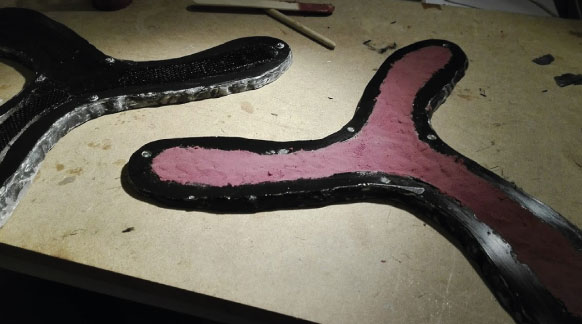Why use a carbon fiber boomerang? The answer is not simple, since there are many reasons. In competitions you can find many competitors that use carbon boomerangs and others do not, specially for MTA and Long Distance.
I will try to explain what carbon fiber is, and why it is an ideal material for the manufacture of competition boomerangs for MTA.
What´s inside a carbon MTA Boomerang?
Carbon Fiber is a polymer also known as graphite fiber. It is a very strong and lightweight. Carbon fibers are five-times stronger than steel and twice as stiff. It is an ideal material for crafting MTA Boomerangs, since it reunites the strenght and low weight recquired for this boomerang event.
Basically, the carbon fiber is made out of thin and crystalline filaments of carbon. In fact it can be thinner than human hair.
Some characteristics of carbon fiber:
- Excellent weight to strenght ratio
- High chemical resistance
- Temperature tolerance
- Low thermal expansion
- High tensile strenght

Inside a carbon boomerang you will find different materials, since they are built in a sandwich style lay-up.
Basically a composite boomerang has a core made out of a lightweight material: glass bubbles, phenolic bubbles, technical foams or balsa. This core is covered with high performance carbon fibers impregnated with epoxy resin. This combination of materials provide us a boomerang which is stiff enough to handle a powerful throw, but also lightweight.
So, what is special about a composite boomerang?
Well, if properly built and stored, the carbon fiber boomerang wil stay in tune, so you don´t need to tune if before every throw. that is crutial if you are attending boomerang competitions. In the other hand, “Flexible” materials give you the chance to play around and learn to tune it. A competition boomerang is meant to stay in tune, and ready to fly.
Interested in learning about MTA Boomerangs?
Don´t miss our post about the history of MTA Boomerangs

